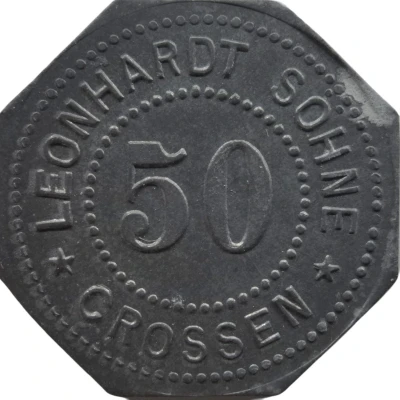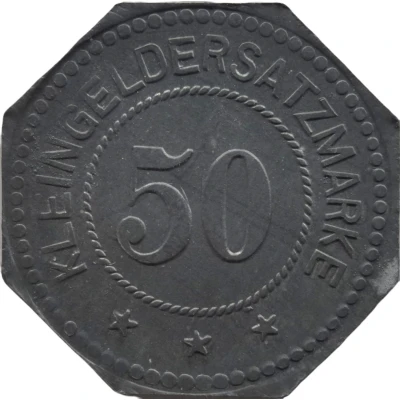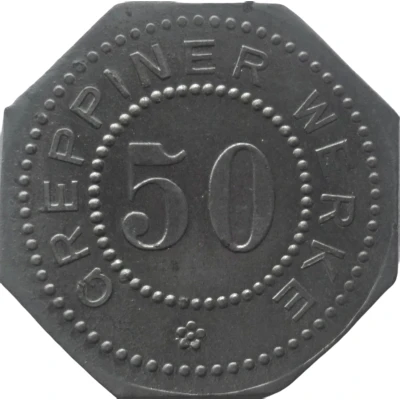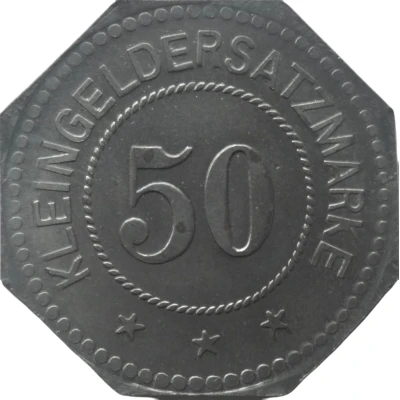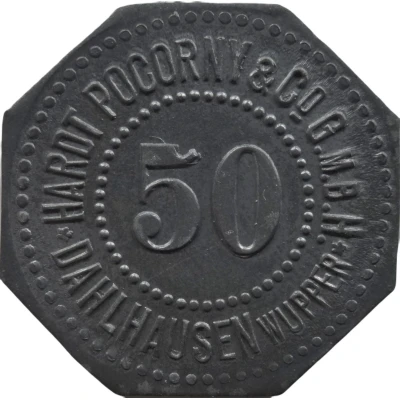
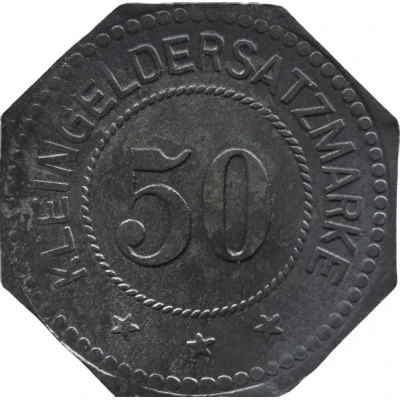

© Willem63 (CC BY-NC-SA)
50 Pfennigs - Dahlhausen (Hardt Pocorny and Co G.M.B.H.) ND
| Zinc | 3.2 g | 24.3 mm |
| Issuer | German notgeld (Germany) |
|---|---|
| Type | Standard circulation coin |
| Value | 50 Pfennigs (50 Pfennige) (0.50) |
| Currency | Mark (1914-1924) |
| Composition | Zinc |
| Weight | 3.2 g |
| Diameter | 24.3 mm |
| Thickness | 1.2 mm |
| Shape | Octagonal (8-sided) |
| Technique | Milled |
| Orientation | Medal alignment ↑↑ |
| Demonetized | Yes |
| Updated | 2024-10-04 |
| Numista | N#320686 |
|---|---|
| Rarity index | 97% |
Reverse
Pearl rim, legend surrounding rope circle with denomination centered
Script: Latin
Lettering:
KLEINGELDERSATZMARKE
50
★ ★ ★
Edge
Plain
Comment
Menzel: BBBThe village became famous for the Hardt & Pocorny textile factory , which is one of the three large factories on the Wupper, which are lined up like a string of pearls. Between 1815 and 1830 the industrialist Adolf Bauendahl from Radevormwald bought the area in the Vogelsmühle to run a cloth factory there. In 1855, however, the operation was shut down again and eleven years later the Johann Wülfing & Sohn company acquired the site to convert the factory into a carded yarn spinning mill. On January 1, 1884, the name was changed to Hardt, Pocorny & Co. In the heyday, the textile factory employed over 1,000 people. In 1974 the plant had to be closed for good, and since then large parts of the large area on the banks of the Wupper have been vacant.
Interesting fact
One interesting fact about the 50 Pfennigs - Dahlhausen coin is that it was made of zinc, which is a relatively rare metal for coins, especially in the early 20th century when this coin was minted. Zinc coins were often used in Germany during this time period as a substitute for copper or nickel coins, which were in short supply due to the war effort. This coin's unique composition makes it stand out among other coins of its time and adds to its collectibility.
